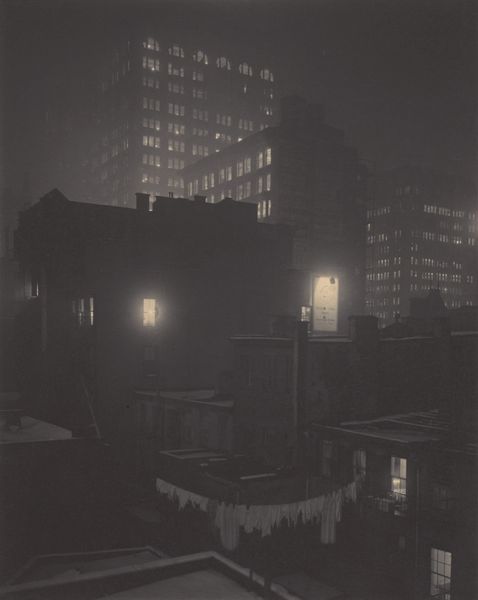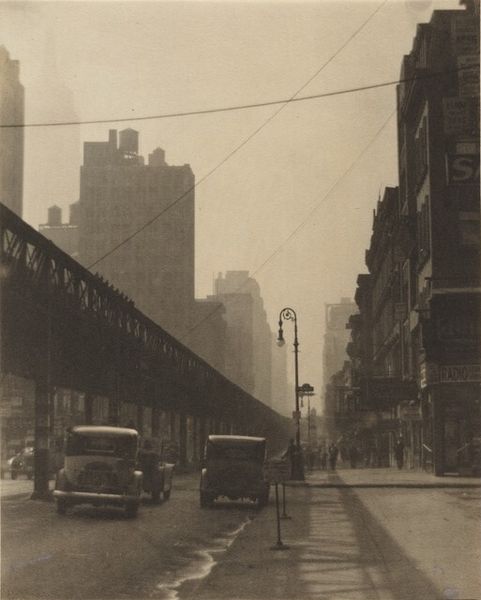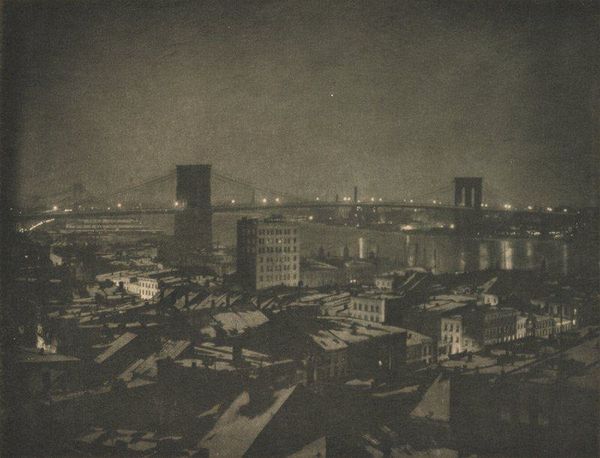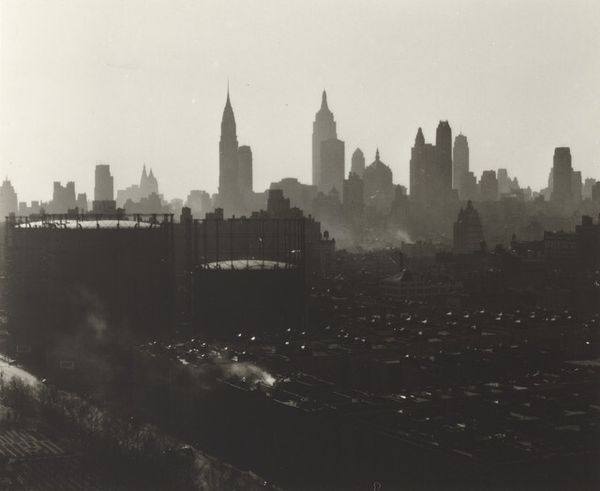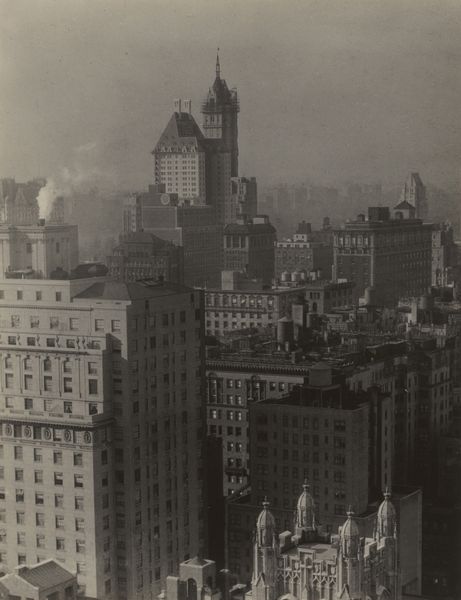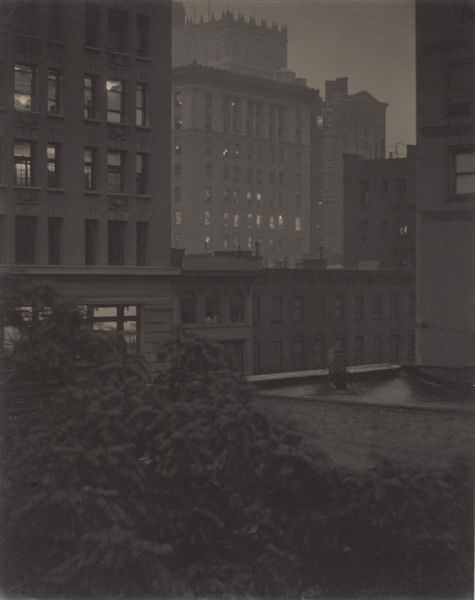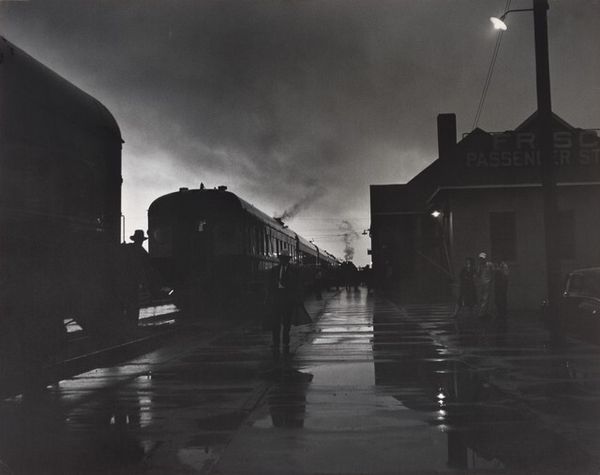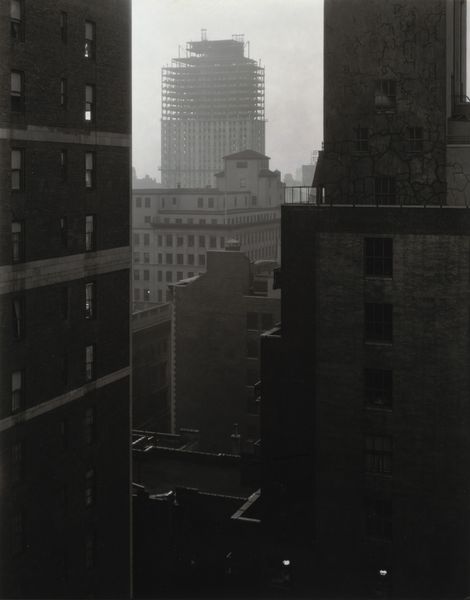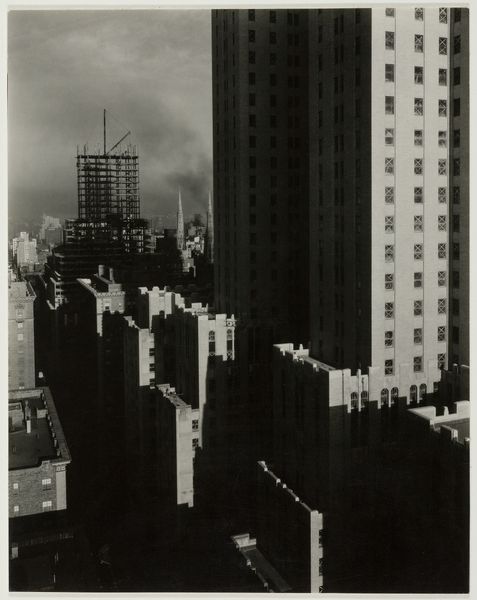
#
black and white photography
#
eerie mood
#
black and white format
#
warm monochrome
#
b w
#
black and white theme
#
black and white
#
monochrome photography
#
monochrome
#
shadow overcast
Dimensions: sheet: 51.3 × 60.6 cm (20 3/16 × 23 7/8 in.) image: 32.5 × 54.3 cm (12 13/16 × 21 3/8 in.)
Copyright: National Gallery of Art: CC0 1.0
Curator: Looking at Gordon Parks’ “Harlem Rooftops,” created after 1948, what strikes you immediately? Editor: It's moody, undeniably. A black and white landscape where buildings seem to fade into the sky, creating an atmosphere that feels heavy, almost oppressive. The rooftops dominate the foreground, these stark shapes that pull you into the smoky distance. Curator: It's a masterful rendering of urban space. Parks offers not just an image, but a narrative rooted in the sociopolitical realities of Harlem. The contrast between the imposing architecture and the diffused light, suggestive of smog, evokes ideas about marginalization and systemic inequality. Editor: The diffused light does more than that, I think. The silhouettes of those church spires remind me of old devotional images. It brings a strange sacral feeling to the urban landscape, suggesting enduring values or perhaps forgotten ideals amidst all this concrete. It also feels very much like the iconography from silent films, recalling eras of massive urban growth. Curator: Interesting parallel. I'd argue the “sacral” element speaks to the endurance of the Black community despite facing significant structural obstacles. Think of the role of the Black church during the Civil Rights Movement. This photo, through its tonal range and subject matter, participates in a larger historical discourse about power and resilience. Parks himself used his camera as a weapon, as he would say, against social injustice. Editor: Weapon, yes, but also as a mirror. And I agree; resilience radiates here. The city never sleeps, it survives—that's its inherent visual message. Consider the placement of those smoky forms rising up—they visually communicate rebirth. What is being lost or burned is almost like sacrifice so new buildings or communities can be renewed and be reborn into existence, rising through the smoke to meet new futures. Curator: A poignant reading, emphasizing cyclical patterns of urban renewal and destruction within Black communities, spaces caught in systems of both marginalization and vibrant innovation. Parks captured a space between then and now, which continues to speak to the now. Editor: It reminds me of so many images passed down from different cultural centers... symbols speaking through a black-and-white rendering of a specific place and moment, but pointing at much more than Harlem in the late 40's.
Comments
No comments
Be the first to comment and join the conversation on the ultimate creative platform.
